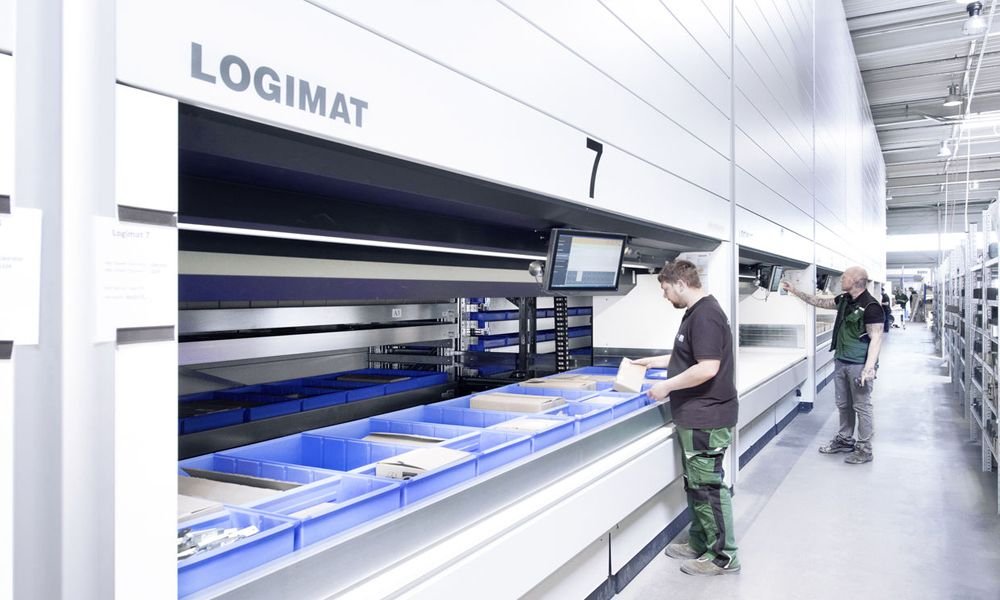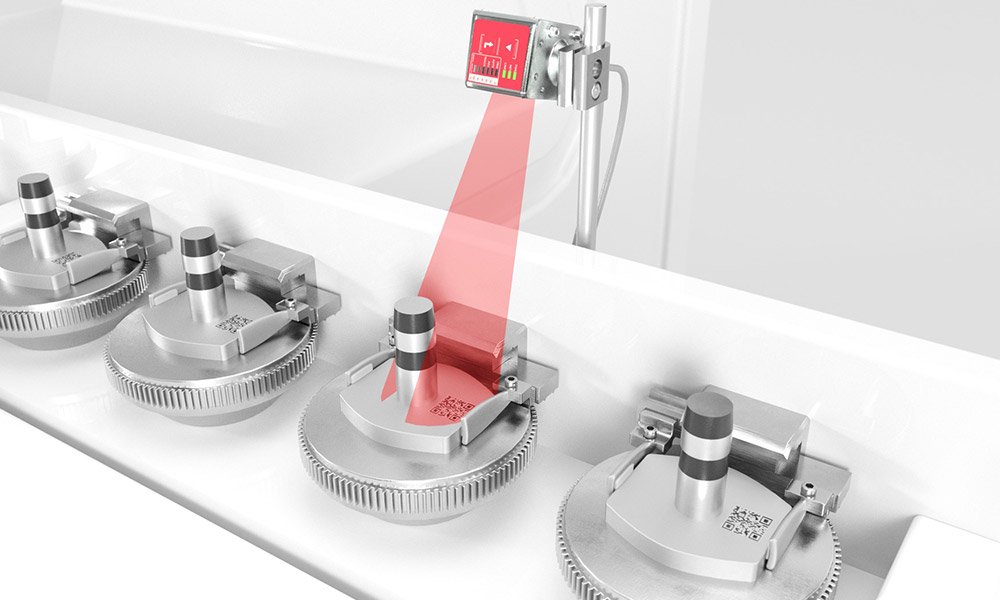Using Artificial Intelligence (AI) can be very worthwhile when it comes to identifying the bar codes on goods. Interfering factors can be identified quickly and easily both during commissioning of a system and during operation.
No need for time-consuming searches
Bar code readers are sensors used to identify goods and materials in production or logistics. They do so by detecting bar codes that meet one of a number of standards and then supplying the IDs of the bar codes to a superior system. When using these devices in automated applications, the main objective is to achieve the highest possible reading quality: Essentially, when bar code readers detect the labels, the quality with which they perform this task varies, and this quality can be indicated as a percentage. The percentage relates to the contrast detected. If the value is below a certain threshold, the label is no longer read. One challenge faced by system operators is to find bar code readers as quickly as possible when they are no longer providing sufficient reading quality, and to determine the reasons for this – without additional data regarding the possible sources of error, this can be a time-consuming task. Particularly in large systems, for example in intralogistics, that have up to 1,000 bar code readers and kilometer-long transport routes, the search is like looking for a needle in haystack: If in doubt, a technician must trace the entire route of a transport material in order to identify a poorly aligned sensor or the interfering factors in its direct environment, all while under time pressure. The situation is made worse by borderline cases, such as when the bar code reader is somewhat aligned and reads successfully most of the time, but occasionally does not detect labels. This may be because the bar code reader is slightly inclined or only reads in the border area, or other factors may play a role, for example labels of insufficient quality.
Factors that influence reading quality
However, generating corresponding data to find the causes of errors using the bar code reader itself is only possible under certain circumstances. It is true that the sensors monitor their own status and transfer data to the superior system via OPC UA if required. However, this self-monitoring has only very limited functionality – a sensor only considers its own view. This means that it sends information such as “I’m currently reading,” “Excellent reading,” or “Very poor reading” – i.e. its calculated percentage reading quality. The reason for the poor reading quality cannot be identified by the individual device. There are three possible influential factors in this case: The device itself, the bar code label and interfering factors in the environment. Possible sources of error relating to the bar code reader itself include poor alignment to the labels to be detected or a technical fault. In turn, labels can be damaged, soiled or poorly printed, which, depending on the degree of damage or printing quality, may only reduce the reading quality or may prevent identification entirely. Interfering factors in the environment include vibrations, dust, and glare caused by sunlight or emitters in the background. Humidity, for example in cold stores, can be an interfering factor if this causes fogging on the scanning window of the bar code reader.
Artificial intelligence provides the context
AI can help to distinguish the various causes from one another and in doing so identify the reasons for interferences or poor reading quality. Leuze is working with an automobile manufacturer to develop a solution that enhances sensors with data from the overall context. The advantage of this is that the bar code readers remain operational as usual without additional work being generated for the customer during installation. The data volumes are large: Many labels pass by many bar code readers during the process and are read at various installation locations. This is where the overall context comes from. In mathematical terms, this overall context can be described as an equation with many unknowns – countless bar code readers, labels that crop up even more frequently and the various installation locations of the readers. At every station and for every label there is a different result in terms of reading quality percentage. AI solves this complicated equation system and answers the questions about whether a poor reading quality occurs always with a particular bar code reader, only with one label or a particular label type or always at a particular installation location.
Machine learning via recommendation algorithms
To achieve this, Leuze uses recommendation algorithms, i.e. AI-based recommendation methods. These are the same methods that are used by streaming services, for example, to evaluate user behavior and recommend corresponding films or series based on this analysis. In this user behavior analogy, the bar codes correspond to the films and the bar code readers to the users of the streaming services. The recommendation algorithm rates a label as more or less “attractive” for different bar code readers. In this way, it is possible to determine which sensor or which label with a certain percentage is “unattractrive”, i.e. borderline or noticeably problematic.
Per edge device or cloud
In technical terms, an AI-based solution of this kind can be implemented via edge devices or a cloud, depending on the customer requirements and the respective system. An edge device is a separate device that is located in the vicinity of a sensor group and gathers, analyses and passes on the data of the sensor group. Multiple edge devices can be connected to one another. Since an edge device is capable of two-way communication, not just gathering and evaluating data but also sending the analysis back to the sensors, a bar code reader can also pass on this information and report that there is a problem. The advantage of this is there is no need to make any changes to the IT architecture of the customer. Alternatively, the solution can be operated via a cloud if data from separate locations is to be merged.
Significant potential for savings
Leuze’s approach of using AI-based recommendations to identify errors offers huge advantages both during commissioning and during operation of a system. Fast commissioning saves time and money. In this case, it is useful if the causes of poor reading quality are identified immediately. During operation, this method enables predictive maintenance. This means that if a shutdown will soon be required, system operators can take suitable measures in good time and, for example, manufacture and outsource in advance so that they can continue to supply their customers. In some cases, data from multiple years can be used to facilitate this early detection. In addition, the system learns continuously. Therefore, using AI is always worthwhile when it comes to quickly and reliably identifying factors that interfere with the identification of bar codes on goods.





